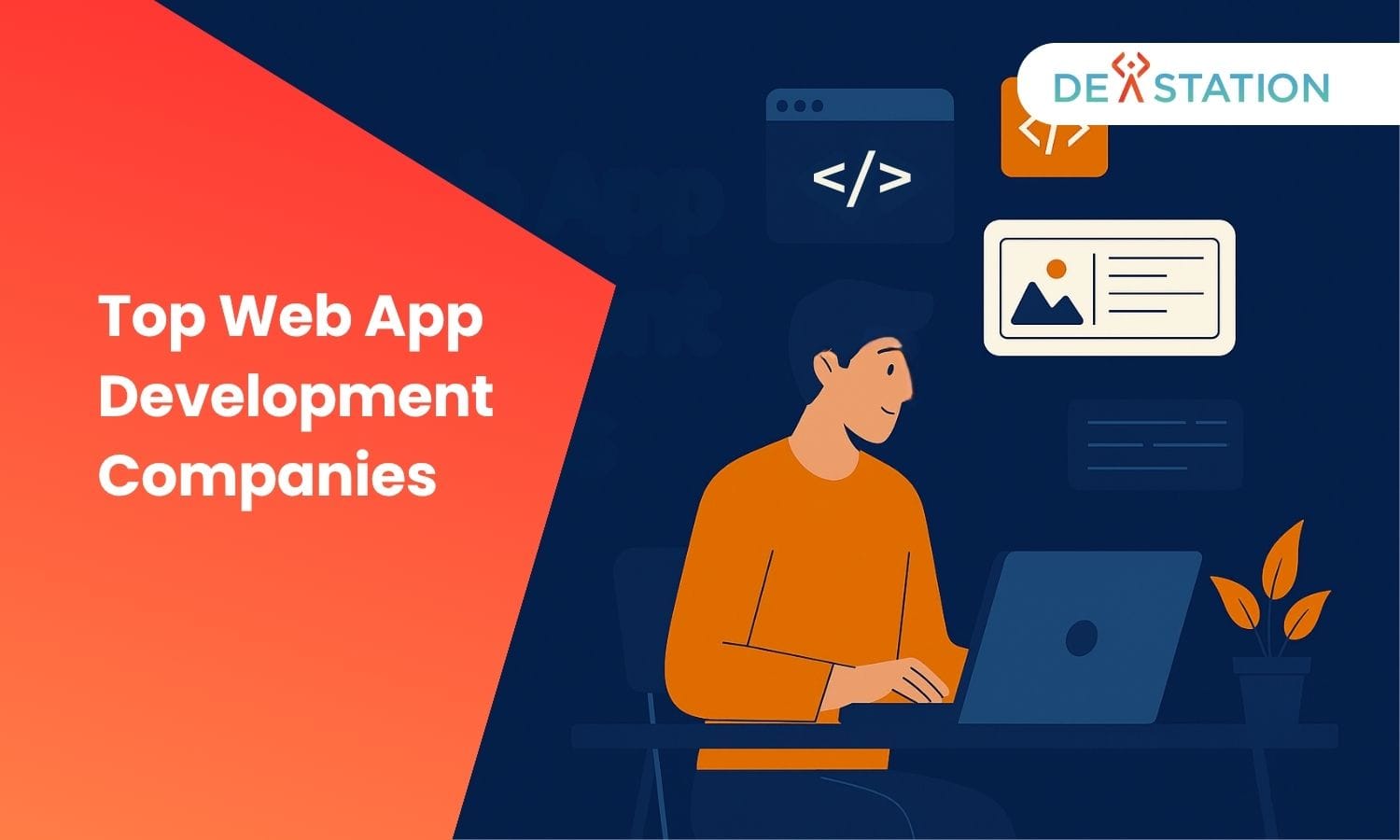The United States dominates the global app market, with American publishers launching over 185,000 applications on Google Play in recent years. As smartphone adoption grows, businesses face increasing pressure to deliver innovative digital experiences. This demand fuels a competitive landscape where selecting the right technical partner becomes critical for success.
Organizations must evaluate multiple factors when choosing a service provider. Technical expertise in modern frameworks, proven project management practices, and alignment with long-term business goals separate exceptional partners from average vendors. The market’s projected 8.77% annual growth through 2026 underscores the need for scalable solutions that adapt to evolving user expectations.
Contents
ToggleKey Takeaways
- US app revenue could surpass $108 billion this year
- Smartphone advancements drive demand for sophisticated tools
- Portfolio analysis reveals true technical capabilities
- Client testimonials provide insight into workflow reliability
- Scalability planning prevents costly system overhauls
Decision-makers should prioritize partners demonstrating cross-industry experience and transparent communication protocols. A company’s ability to balance immediate deliverables with future-proof architectures often determines project outcomes. This guide analyzes market leaders through the lens of real-world performance metrics and client success stories.
Introduction to the Web App Development Landscape
The shift toward digital-first strategies has propelled the evolution of web-based tools across industries. Over the past decade, rising consumer expectations and rapid digitization have transformed how businesses approach software solutions. Organizations now demand platforms that integrate smoothly with legacy systems while delivering consistent performance on all devices.

Today’s landscape offers multiple pathways for creating digital products. Traditional custom coding remains popular for complex projects, but low-code platforms now enable faster prototyping. Decision-makers must weigh factors like scalability and maintenance costs when choosing between these approaches.
Understanding technical distinctions proves critical. Web applications differ from native mobile app development solutions in architecture and deployment. Hybrid models blend elements of both, requiring careful planning to balance performance with cross-platform accessibility.
Methodologies also shape outcomes. Agile frameworks prioritize iterative improvements, while DevOps practices enhance collaboration between teams. Specialized expertise in frontend frameworks like React or backend systems such as Node.js remains essential for tackling modern tech stacks.
Evaluating development companies demands scrutiny of their problem-solving capabilities. Look for partners who demonstrate fluency in current tools and explain technical concepts clearly. This foundation ensures alignment with both immediate needs and long-term digital goals.
Understanding the Web App Development Landscape in the USA

America’s digital ecosystem thrives on concentrated innovation hubs and distributed technical talent. While San Francisco and New York dominate headlines, cities like Austin and Denver now host 23% of specialized teams focused on mobile app development. This geographic spread offers businesses multiple entry points for sourcing expertise.
Major metro areas attract established firms with deep industry connections. Los Angeles-based studios, for example, often partner with entertainment giants to create streaming platforms. Meanwhile, Boston’s academic institutions fuel experimental approaches in healthcare technology. Regional markets balance cost efficiency with access to skilled professionals.
| Tech Hub | Specialization | Startup Density | Cost Efficiency |
|---|---|---|---|
| San Francisco | Enterprise SaaS | High | Low |
| Los Angeles | Media & Entertainment | Medium | Moderate |
| New York | Fintech | High | Low |
| Austin | AI/ML Solutions | Growing | High |
Three factors differentiate U.S. providers: regulatory compliance expertise, academic partnerships, and vertical specialization. Financial institutions prefer New York teams versed in FINRA standards, while Midwest firms often excel in manufacturing logistics tools.
Emerging markets demonstrate surprising strengths. Salt Lake City developers report 18% faster deployment times for e-commerce platforms compared to coastal counterparts. This diversity enables precise vendor matching based on project requirements and budget parameters.
Key Factors to Consider When Hiring Web App Developers
Identifying suitable partners demands scrutiny of both coding expertise and sector familiarity. Technical capabilities form the backbone of successful projects, while industry alignment ensures solutions address real-world challenges. These dual considerations separate temporary vendors from strategic collaborators.
Core Technical Competencies
Evaluate partners through their mastery of modern tools. Proficiency in frameworks like React or Angular often dictates interface quality. Backend systems require expertise in databases such as PostgreSQL and cloud infrastructure management.
| Evaluation Aspect | Technical Focus | Industry Alignment |
|---|---|---|
| Programming Languages | JavaScript, Python, Ruby | Domain-specific libraries |
| Security Protocols | OAuth 2.0, SSL/TLS | Sector compliance (HIPAA, PCI DSS) |
| Scalability Features | Microservices architecture | User traffic patterns |
Sector-Specific Adaptation
Healthcare tools demand HIPAA compliance, while fintech solutions require transaction auditing. Partners should demonstrate familiarity with your industry’s regulatory landscape. Ask for case studies showing how they’ve solved similar challenges.
Ongoing support separates good teams from great ones. Verify maintenance plans covering updates and security patches. Regular code reviews prevent technical debt accumulation as needs evolve.
Evaluating Top Web App Development Companies
Selecting the right technical partner requires a strategic approach beyond surface-level credentials. Proven expertise in delivering scalable solutions matters more than company size or marketing claims. Analysts prioritize teams with cross-industry experience and documented success in projects matching your scope.
Assess portfolios for depth rather than quantity. A software development company specializing in healthcare tools may lack fintech compliance knowledge. Verify certifications like ISO 27001 for security-focused projects and review client feedback about communication patterns. Cultural alignment often determines how smoothly teams collaborate during iterative processes.
Financial health indicators reveal long-term reliability. Partners with 5+ years in business typically offer stable support for post-launch maintenance. Evaluate their scalability plans – can they expand resources if your user base grows 300% unexpectedly? Transparent contracts with fixed milestones minimize budget risks while ensuring accountability.
Technical audits separate competent vendors from exceptional ones. Request code samples demonstrating clean architecture and adherence to OWASP security standards. The ideal app development company balances cutting-edge frameworks with practical deployment strategies tailored to your operational needs.
Using Key Comparisons to Choose the Right Vendor
Navigating vendor selection requires balancing operational needs with technical requirements. Team structure and technological adaptability often determine whether projects meet deadlines or encounter roadblocks. These factors shape collaboration dynamics and solution quality.
Team Size versus Flexibility
Large teams with 200+ professionals excel at handling complex mobile app development projects. They bring specialized skills but may require weeks for onboarding. Mid-sized groups (50-200 members) adapt faster while maintaining structured workflows.
Smaller companies (
Tech Stack and Innovation
A partner’s tools reveal their problem-solving approach. Some focus on specific frameworks like React Native for cross-platform apps. Others combine multiple languages to address unique business needs.
Leading development companies invest 15-20% of budgets in R&D. Ask how they’ve implemented AI-driven features or real-time analytics in recent projects. This demonstrates their ability to future-proof solutions.
Evaluate their update frequency for existing apps. Teams using automated testing pipelines often deploy fixes 40% faster than manual approaches. This responsiveness becomes critical for user retention.
Leveraging Reviews and Ratings for Decision Making
Third-party feedback offers critical insights when selecting technical partners. Platforms like Clutch reveal how app development teams perform under real-world conditions. Patterns in client experiences often highlight strengths invisible in sales pitches.
Clutch Reviews and Testimonials
Leading firms showcase consistent performance across multiple projects. Brainhub maintains a 4.9-star rating across 47 reviews, with clients praising their React Native expertise. STX Next’s 4.7/5 score from 93 evaluations highlights strengths in meeting deadlines and maintaining clear communication.
| Company | Rating | Reviews | Key Strength |
|---|---|---|---|
| CheesecakeLabs | 4.9/5 | #5 in React Native | Cross-platform optimization |
| STX Next | 4.7/5 | 93 testimonials | Project management |
| Brainhub | 4.9/5 | 47 verified cases | Technical innovation |
Look for repeated themes in feedback. A web development company with multiple mentions of budget adherence likely delivers financial predictability. Negative reviews matter too – observe how teams resolve issues. One fintech client noted: “STX Next rebuilt our API within 72 hours post-launch when traffic spiked unexpectedly.”
Combine quantitative scores with qualitative analysis. Check if reviewers describe specific technical challenges or business outcomes. This approach helps find best matches for specialized projects in healthcare or finance.
The Role of User Experience and Design in App Development
User-centric design principles have emerged as a cornerstone of successful digital products. Nearly 70% of projects fail due to poor interface design, making thoughtful UX strategies essential for retention and growth. Effective teams blend technical execution with human-centered approaches to create solutions users genuinely value.
Importance of UX/UI Design
Professional design services transform abstract ideas into intuitive interfaces. CheesecakeLabs, for instance, achieves 40% higher user satisfaction through mobile-first prototyping and accessibility audits. Their process emphasizes iterative testing to align interfaces with actual behavior patterns.
| Design Element | Impact on Engagement | Common Tools |
|---|---|---|
| Information Architecture | 35% faster navigation | Figma, Sketch |
| Interactive Prototypes | 50% fewer revisions | InVision, Adobe XD |
| Accessibility Checks | 20% wider reach | axe, WAVE |
Modern workflows integrate design and technical teams from day one. This collaboration prevents mismatches between visual concepts and functional requirements. “Great design solves problems users didn’t know they had,” notes a CheesecakeLabs UX lead.
Analytics tools now measure design effectiveness through metrics like session duration and conversion paths. These insights guide continuous improvements, ensuring solutions adapt to evolving needs while maintaining compliance with ADA standards.
Strategic Benefits of Digital Transformation in Web Development
Digital transformation reshapes how organizations leverage technology to achieve strategic objectives. Modern enterprises using tailored digital solutions report 22% faster decision-making cycles and 31% higher customer retention. These initiatives extend beyond technical upgrades, influencing workflows and market positioning.
Custom-built systems address unique operational challenges better than generic tools. A logistics firm reduced shipping errors by 40% after implementing route optimization software. Such business-specific adaptations create defensible advantages competitors can’t easily replicate.
| Traditional Approach | Digital Transformation | Impact |
|---|---|---|
| Manual data entry | Automated workflows | 65% time savings |
| Isolated databases | Unified cloud platforms | Real-time analytics |
| Fixed infrastructure | Scalable architectures | 50% cost reduction |
Integration capabilities eliminate silos between departments. Marketing teams gain instant access to inventory data, while finance departments track project budgets dynamically. This connectivity drives smarter resource allocation across organizations.
Effective partners help navigate cultural shifts during technology adoption. Training programs and phased rollouts minimize employee resistance. One healthcare provider achieved 89% staff adoption rates through gamified learning modules.
Long-term success requires aligning digital transformation with evolving regulations. Proactive teams update systems for GDPR compliance or payment security standards before deadlines. This foresight prevents costly redesigns and maintains user trust.
Insights into Custom Software and Tailored Solutions
Tailored digital solutions are reshaping how enterprises address complex operational challenges. Unlike off-the-shelf tools, custom software development delivers precise functionality aligned with unique workflows. This approach proves vital for organizations requiring specialized integrations or compliance features.
Strategic Implementation Methods
App Maisters exemplifies this practice through government-focused platforms combining security protocols with citizen accessibility. Their process begins with gap analysis to identify inefficiencies in existing systems. Teams then design modular architectures that scale alongside evolving needs.
Effective custom software projects balance technical rigor with user adoption strategies. Developers at leading firms often deploy:
- Cross-functional workshops to align stakeholders
- Prototyping phases for real-world testing
- Compliance audits during deployment
One municipal collaboration reduced permit processing times by 60% using App Maisters’ custom web portal. Such successes highlight how application development expertise translates into measurable operational improvements. Partners who prioritize adaptability ensure solutions remain relevant amid shifting regulations.





